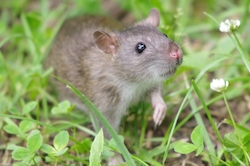Genetically mutated rats could be a 21st century form of pest control
Now there may be a better way to control their numbers. Researchers in Scotland said in December 2017 they had developed two different ways to disrupt female fertility in rats and mice, building on a similar approach that has already been tested in the lab to eliminate malaria-carrying mosquitoes. Scientists working at the University of Edinburgh’s Roslin Institute are looking into a new tool to further the goal by using CRISPR gene editing techniques. CRISPR stands for ‘Clustered Regularly Interspaced Palindromic Repeats’, chunks of regularly recurring bits of DNA that arose as an ancient bacterial defense system against viral invasions. Gene editing involves the precise cutting using acts like a pair of molecular scissors, and pasting of DNA by specialised proteins—inspired by nature, engineered by researchers. Using this editing technique, the team is investigating a technology called 'gene drive' as a way to spread infertility in rats and mice – the technique already works for mosquito control. Gene drive is a powerful technique used to ensure that a particular genetic trait is inherited by all descendants. It means that a gene of interest can spread throughout an entire population within a few generations. Currently, an older approach called ‘sterile insect technology’ is being used in some areas to fight mosquitoes. Intrexon’s Oxitec unit has already deployed its sterile male mosquitoes, whose offspring die when young, in Brazil. But because Oxitec’s mosquitoes last only one generation, a vast number must be released to swamp their wild counterparts. EU support to the INTEGRA project, now over, is feeding into the research assessing the impact of the insertion of ‘x shredder’ code into the DNA of male rats. This would destroy the ‘x’ chromosomes in their sperm, meaning they could only pass on a ‘y’ chromosome, so their offspring would never be female. With fewer and fewer females over time, the population would have to decline. The rodents would be genetically modified in the laboratory before being released into the wild where they could mate with the native population. Professor Bruce Whitelaw and his colleagues, who published details of their rodent work in the journal Trends in Biotechnology, hope as a next step to build self-limiting gene drives that would burn out after a certain number of generations. Successful application of the technology would mean the use of poisons, pesticides and other chemicals would be obviated. INTEGRA (New tools for genetic engineering using targeted integration vectors application to agronomy food safety and gene therapy) set out to develop new genetic engineering tools to permit the targeted integration of a transgene into the genome of the desired eukaryotic organism. The researchers hoped this would have visible repercussions on fundamental and applied research particularly in pharmaceutics agronomy and food sciences. For more information, please see: Project website
Countries
United Kingdom



